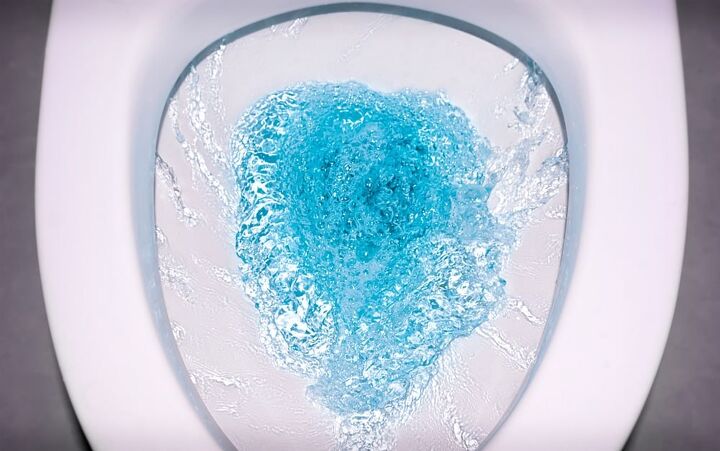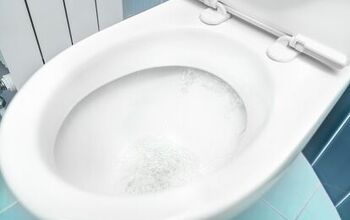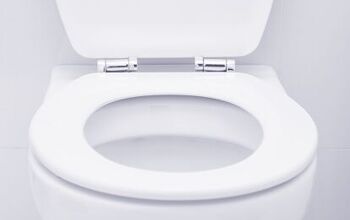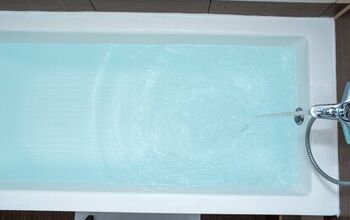Why Is My Toilet Water Blue? (Find Out Now!)

Believe it or not, your toilet is a fairly complicated fixture. There are more than a few things that can go wrong at any time, leaving you with a plethora of questions and not too many answers. From time to time, you may see an issue that leaves you stumped.
One such issue is when you see blue water coming out of your toilet. No, not through the use of some blue tablet, either (though some do this). When you see green or blue water, it is generally due to corrosion in the copper piping that runs into your toilet. The elevated corrosion can potentially damage your toilet as well as the piping, so addressing the issue sooner than later is key.
Do You Need to Hire a Plumber?
Get free, zero-commitment quotes from pro contractors near you.

Blue Toilet Tablets
Before we get to the aforementioned corrosion, there is another factor at play here. There are blue toilet tablets that get used all the time to keep toilets clean and sanitized. They are meant to not only give your water a vibrant blue color, but to keep your toilet looking and smelling clean.
That said, there are two major downsides to using those tablets. For one they can cause corrosion in the tank. For two, they are made using chemicals that could be potentially harmful when released in your home and the environment in general.
Why Avoid Blue Toilet Cleaner Tablets
Despite being advertised as cleaning your toilet, those blue tablets may actually be causing more harm than good. The impact won’t be immediate and you may not even realize the damage that they are ultimately doing.
There are two reasons in particular that you should avoid using those blue tablets whenever possible. The first is the damage that it can cause to the flush valve. The second is the environmental impact that those tablets can have.
Blue Tablets are Bad for the Toilet
Crazy as it seems, these blue tabs go from cleaning your toilet to being bad for them. The flush valve in particular is susceptible to the blue cleaner tablets. Given the fact that the flush valve is one of the most important components in your toilet, that can be a bad combination.
The chemicals used in cleaning tablets can possibly corrode the flush valve and other internal components. Those chemicals can also build up and even get stuck in the various components of your toilet.
Instead of cleaning your toilet, those tablets may actually be wearing down one of the most crucial components of your toilet.
Environmental Impacts
When we use chemicals to clean our bathroom, we turn a fan on or open a window. It helps to disperse those harmful chemicals so that we don’t breathe them in. What most people don’t realize with the cleaning tablets is that they are full of harmful chemicals.
Even worse, those toilet tank tablets have a constant emission of chemicals. Those chemicals can be harmful to both you and the environment. Even worse, if you have pets that like to get their refreshments from the toilet, that water is laced with chemicals that could take a major toll on their health.
What are the Alternatives to Those Blue Tablets?
Cleaning your toilet is certainly important. After all, you want to keep it sanitary for frequent use so that the various components don’t wear down. While the tablets may make things easier, they can be doing more harm than good.
The best alternative is to use a “green” cleaner. There are plenty of natural cleaning agents out there that are just as effective without the potentially hazardous chemicals. Moreover, those natural cleaners won’t wear down the components of the toilet.
It’s Not Blue Cleaner Tablets, So Why Is My Water Blue?
If you don’t use the aforementioned blue toilet tank cleaner tablets, then you are probably perplexed as to why your toilet water is blue or even a greenish hue. The most likely explanation is that there is some kind of corrosion happening to the internal copper piping.
When you notice this blue or green tint to your toilet water, the chances are that it is not isolated to your toilets. Should you notice that your water has a bit more metallic taste to it, you are facing elevated levels of copper.
Elevated Copper Levels
It is important that, if you think there are elevated levels of copper in your water, you not consume it where possible. Water that has elevated levels of copper in it can have potentially negative health implications attached.
Low levels of copper are good for your health. That said, the National Health and Medical Research Council (NHMRC) specifies that 2 mg/L is the limit for healthy consumption. Anything more than that should not be consumed nor should it be used in the preparation of food.
With levels that elevated, though, you should begin to see either blue or green particles or a cloudy aesthetic to the water. When you boil copper-elevated water, the particles can start to look brown or black and will settle on the water’s surface.
Another Telltale Sign: The Blue Ring
Perhaps the water isn’t quite as blue as you might think it would be, making it more difficult to recognize elevated copper levels within your water supply. The most obvious sign that your water levels are contaminated is if there is a blue ring in your toilet.
A blue ring will potentially show up at the same height that the water typically sits at in the bowl. The color doesn’t have to be pure blue; it can be something closer to blue-green in nature. You may even find these stains at the top of the bowl, too.
This is a clear indication that you have at least some slightly elevated copper levels in your water supply. You should avoid consuming water from your water supply in this case at least until a fix can be implemented.
How Does the Water Become Contaminated?
There is an important distinction to make here. For the most part, if your water system runs through the city’s water system, you will likely not deal with this issue. Elevated copper levels generally happen in wells and other small bodies of water.
It typically happens through farming, mining, industrial and municipal wastewater, or manufacturing operations that release into the local water supply. Because city water systems are separate and more strictly managed, you are unlikely to see elevated copper levels in city water supplies.
Copper can also get directing into well water. The only way that you will notice the change in water color or copper levels is if there is some sort of corrosion happening in the copper pipes. When water becomes too acidic, it can then slowly corrode the copper pipes.
What Can Be Done About Elevated Levels of Copper in Well Water?
The unfortunate thing about finding elevated copper levels in well water is that there isn’t much to be done to eliminate the source of the issue. The aforementioned causes are generally there whether you like it or not.
If you have corrosion in your pipes, then you can address the piping directly. Otherwise, there are a few things that you can do to combat having water with elevated copper levels.
Replace Your Copper Piping
This solution is a little less practical and a lot more expensive. If you believe that the source of elevated copper levels in your water are due to corrosion in your pipes, then replacing the pipes may be the best course of action.
Call a plumber and discuss the possibility of re-piping your home. While it may not seem ideal, replacing your pipes before they become further corroded can be the right play. In addition to elevated copper levels, you could be facing cracks and leaks in the near future. Consult a professional to have them replaced if corrosion is the likely suspect.
Switching to plastic piping can help to combat copper corrosion. If you live in an area that is impacted by the aforementioned contaminants – construction, farming, etc. – then there is only so much that can be done. Still, having plastic piping will put you in a better position than having copper piping.
Flush the Pipes Before Using
Again, when you notice blue water in your toilet it is not likely that the toilet is the only impacted portion of the home. Before using water from the tap, flush the system by letting the water run for a little bit.
If you have not turned the tap on for six hours or so, give it a minute to flush out the copper through the tap. The longer that the water sits in your piping, the more copper may be within. Flushing it out may elevate your water usage but should help to clear out the buildup.
Do You Need to Hire a Plumber?
Get free, zero-commitment quotes from pro contractors near you.

Contact Your Municipality
Whether you draw from well water or the public’s water system, noticing copper buildup can be troubling. Call your municipality to see what can be done about these contaminations. They may be able to treat the water impacted by elevated copper levels.
Related Articles

Ryan Womeldorf has more than a decade of experience writing. He loves to blog about construction, plumbing, and other home topics. Ryan also loves hockey and a lifelong Buffalo sports fan.
More by Ryan Womeldorf



























